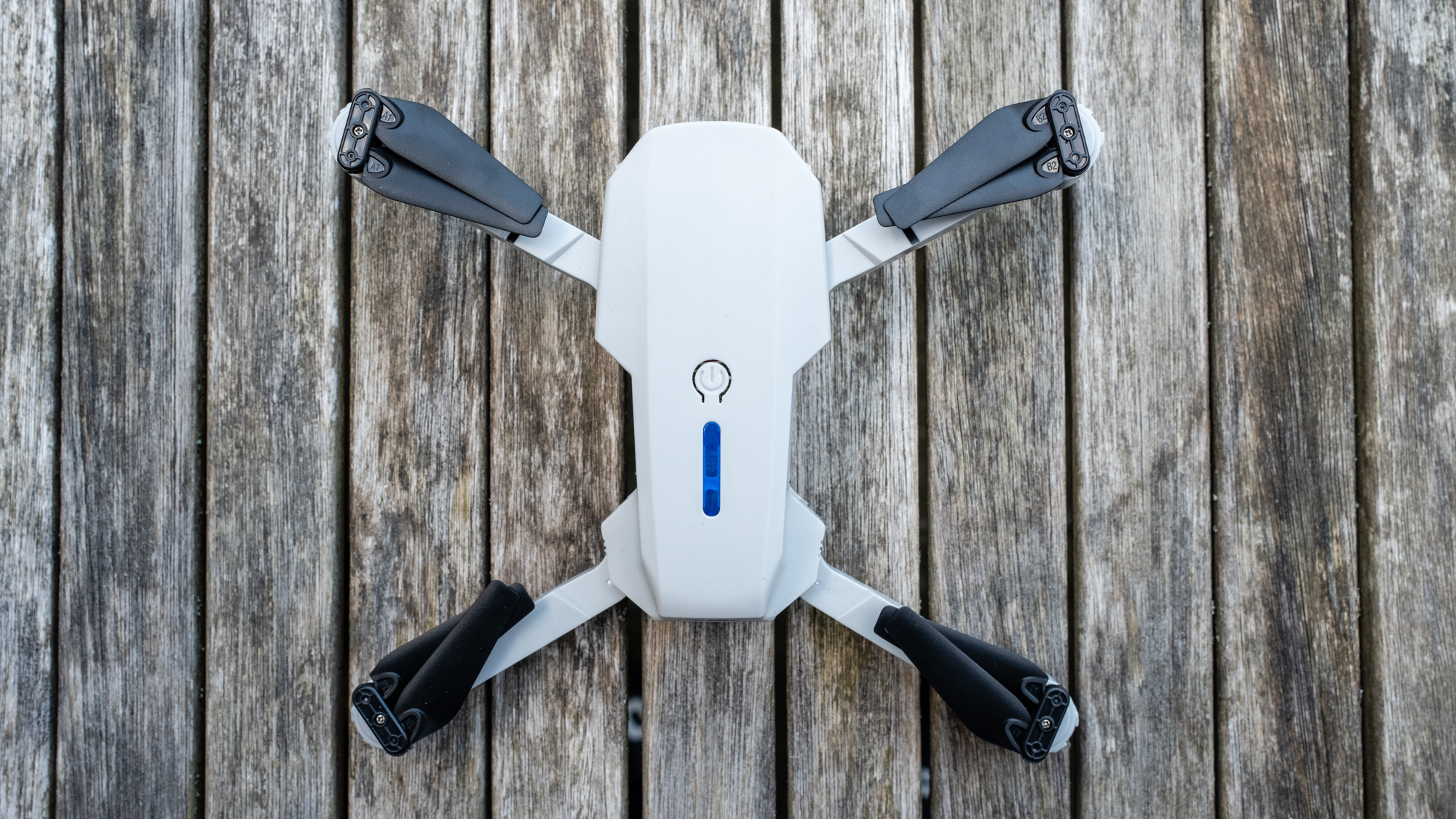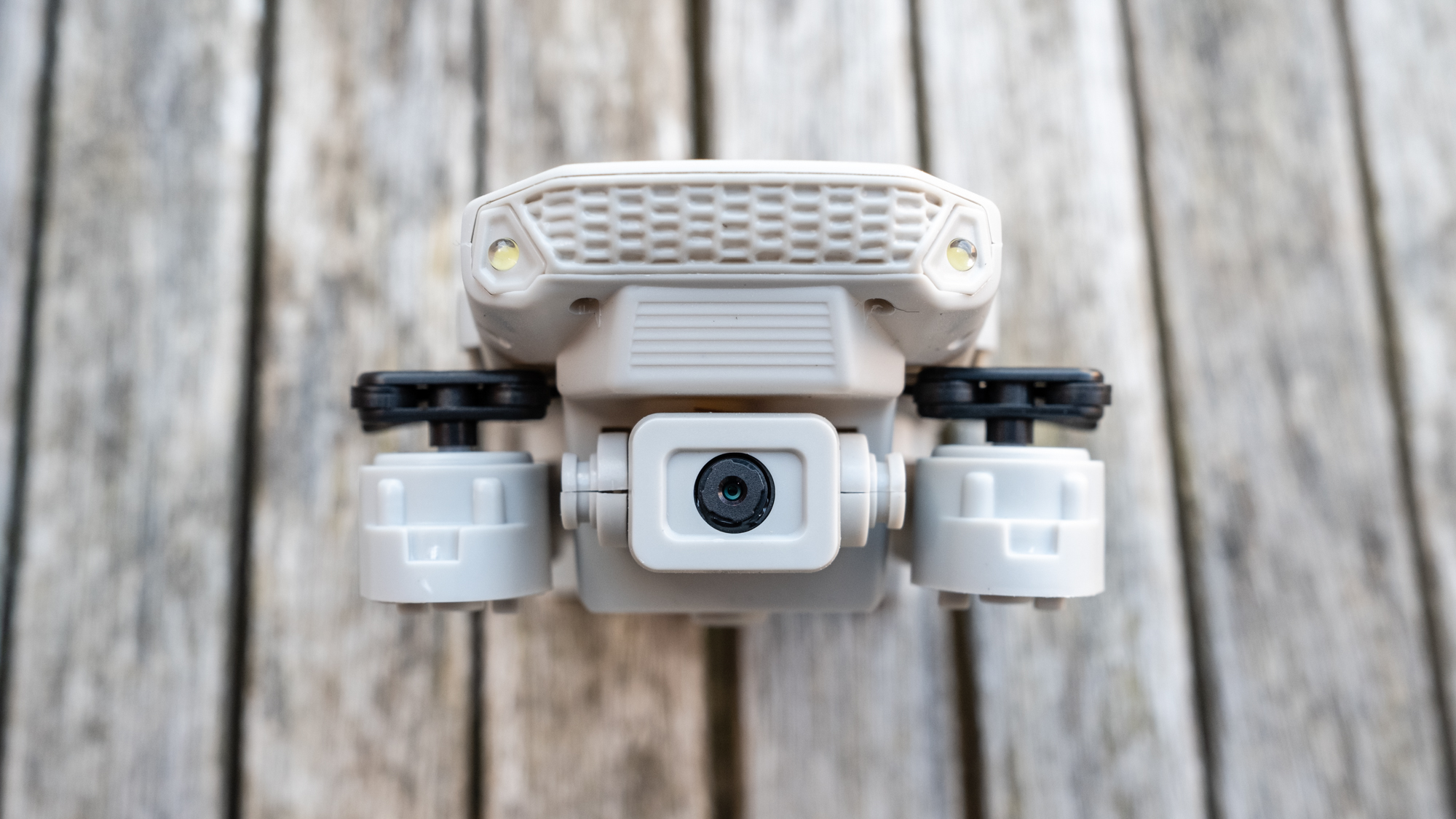
Drones are incredible for capturing inspiring aerial photos and videos, and I’ve been lucky enough to test and review a wide variety of models, ranging from less expensive and basic beginner units to the best drones available. So, it’s fair to say that I have a pretty comprehensive overview of the drone market.
When TechRadar asked me to test the cheapest 4K drone I could find, I knew that I was about to embark on an interesting experiment. Search on the internet and you’ll discover a number of super-cheap drones available from online retailers, most accompanied by glowing four and five-star reviews – which surely must mean that they’re at least good value for money.
With no official model name, and vaguely touted as a ‘Mavic Pro upgrade’, I knew that the drone I eventually purchased was unlikely to get anywhere close performance-wise to even a 10-year-old DJI drone. Nevertheless, I was hoping for the best and expecting the worst, while still open to being pleasantly surprised. And why not? After all, even if a drone that costs just £36.49 including postage is just OK, that’s pretty exciting – especially when you consider that higher-quality beginner drones cost hundreds.

As you’ve probably already seen from the title of the article, the 4K drone I bought was a shocker – and, to be blunt, barely fit for purpose. But rather than leaving it there, let’s delve into what the drone promised and where it failed to meet even modest expectations. It was inexpensive, it flies, it takes photos, it can shoot video, it came in a small carry case and even arrived from China in just two weeks. So what’s the problem; am I just a drone snob?
A Mavic Pro upgrade?
Maybe I am a bit of a drone snob, but I don’t think it’s unreasonable to expect to receive an item that’s as advertised. Despite its low cost, I was still hoping that the 4K drone would at least deliver on the stated specifications. For example, I was pretty sure that image quality wouldn’t be great given the price, but I was at least expecting it to be 4K with 3840 x 2160 pixel dimensions. More on this later. But it’s fair to say that while some of the specs were as stated, others were so far off the mark they could have been written by Pinocchio.




The 4K drone is advertised as having a 1800mAh LiPo battery that takes 100 minutes to charge and lasts 15-25 minutes. Its dimensions are 25 x 20 x 5.5cm unfolded and 12.5 x 8 x 5.5cm folded. The drone is said to come with altitude hold to provide stable flight, two 4K wide-angle cameras for high-definition photos and videos (one on a fixed gimbal and one on the bottom of the drone), and three flight speeds. All in all, the claims were modest, so from a consumer point of view, they could be delivered – even if the drone wasn’t of great quality overall.
Fight or flight
The 4K drone was the size that was advertised and the battery did take around 1.5 hours to charge, so all good there. As expected for the price, the drone and controller are cheaply made, and although the controller does have a phone holder, my phone with a 6.47-inch screen was too large to sit in the unit, so it had to be placed on the ground during flights. This made it impossible to take photos during flight; I could only manage this by holding the drone in one hand and my phone with the RC FPV Pro app running in the other. Video capture was much easier because recording could be started before take-off.
Set up was quick and easy and the instructions were adequate despite being minimal. The connection between the drone, the controller and the app was flaky at best, so I kept the drone within 20 meters to avoid dropped connections, although this still occurred with both the app and the controller, resulting in multiple crashes and dropped video. I flew the drone on a few occasions, but never lasted more than five minutes at a time as a result of the frustration over dropped connections and the overall flight experience. As such, I have no idea if the battery will last the stated 15-25 minutes, because the battery was charged between flights.

The 4K drone supposedly features altitude hold to keep it in hover when the controls are released, but this wasn’t evident during flights; the drone would drift wildly while losing and gaining altitude in equal measure. When flying the drone, you’ll constantly battle this drifting. It’s almost like there’s someone else with a controller who you’re fighting against to maintain control. You’ll see from the video just how erratic flight is as a result.
VGA-OK?
With the promise of 4K resolution, video dimensions should be 3840 x 2160 pixels, irrespective of overall image quality. However, image quality was truly awful, with non-existent detail, colors that were dull and inconsistent from one photo or video to the next, pixelation visible and chromatic aberration/purple fringing extremely strong.




To be honest, this isn’t a surprise because what can you honestly expect from a drone that’s so cheap to buy and even more cheaply made? But the resolution, is it 4K? Not even close, with both images and video at 640 x 480 pixels, the camera is actually only capturing at VGA resolution and is a far cry from what was advertised on the drone’s sales page.
The moral of the story here is that you get what you pay for – and here it was a heap of junk. I’m not surprised that the 4K drone I bought didn’t even come close to being just OK. But it does highlight that beginner drones made by companies such as DJI and Autel offer excellent value for money; they’re well-built, come with the best features and produce the best image quality for photos and videos.
This experiment finishes with me completing a return and refund form – wish me luck.







